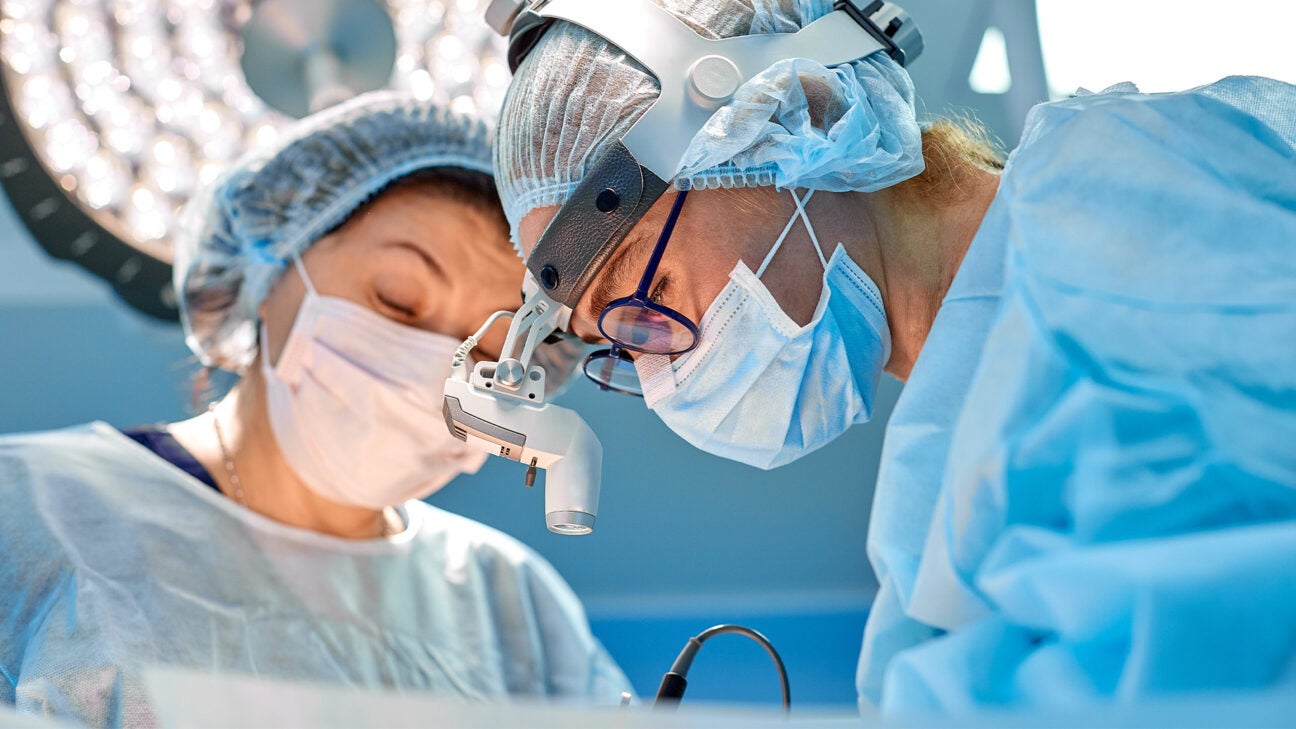
- For the first time physicians were able to use a kidney obtained by a pig and attach it to a human.
- Throughout the transplant and observation period, researchers detected no signs of rejection.
- This marks a major milestone toward using animal organs to help human patients.
Doctors at NYU Langone Health accomplished the first successful transplant of a nonhuman kidney to a human body last month.
According to a recent statement, the procedure, known as “xenotransplantation,” utilized a kidney obtained from a genetically engineered pig that was attached to a deceased patient on a ventilator.
No sign of rejection
Robert Montgomery, MD, the H. Leon Pachter, MD, professor of surgery, chair of the department of surgery at NYU Langone, and director of the NYU Langone Transplant Institute, led a surgical team during the 2-hour operation.
Throughout the transplant and observation period, researchers detected no signs of rejection. This marks a major milestone toward using animal organs to help human patients.
“This research provides new hope for an unlimited supply of organs, a potential game changer for the field of transplantation and people now dying for want of an organ,” Montgomery said in a statement.
‘Dire’ need for organs
According to the Centers for Disease Control and prevention (CDC), on any given day, there are roughly 75,000 people waiting for organs. However, only around 8,000 deceased organ donors are available each year.
‘The need for organs is dire in the United States,” Lewis Teperman, MD, vice chair of surgery and director of the Transplant Center at Northwell Health in Manhasset, New York, told Healthline.
Health Resources and Services Administration (HRSA) figures show that every 9 minutes, someone is added to the transplant waiting list — and 17 people die every day waiting for an organ.
Not a new idea
Experiments with animal organs to help heal people has a very long history, beginning with blood transfusions from different animals to people in the 17th century and attempts to use frog skins for skin grafts in the 19th.
A pig was used for the first cornea transplant in 1838, 65 years before the first transplant using a human-sourced organ in 1905.
By the 1960s, doctors were using chimpanzee or baboon organs to replace human kidneys. However, none of these experimental procedures resulted in long-term success.
“Despite the similarities of nonhuman primate and pig organs to humans, genetic differences have consistently led to immediate organ rejection by the human immune system in prior transplant experiments,” said Valerie Barta, MD, nephrologist at Lennox Hill Hospital in New York.
Genetic modification opens new possibilities
According to NYU Langone, doctors used the kidney of a pig produced by regenerative medicine company Revivicor.
A human gene was added to the pigs to produce a protein called CD46 that moderates the action of the immune system. Additionally, a gene that produces a sugar called alpha-gal (responsible for a rapid rejection of pig organs by humans) was “knocked out” in the donor pig.
“The most recent pig transplant has been genetically altered to attempt to fool the immune system into considering the graft as human,” said Teperman. “If there is no modification of the graft, a hyperacute rejection with immediate graft loss might occur.”
Known as a GalSafe pig, it was approved by the FDA in December 2020 as a potential source for human therapeutics.
An important step
Researchers attached the kidney to blood vessels in the upper leg, outside the abdomen, and covered the organ with a protective shield over the 54-hour period of study.
They observed that key indicators of a properly functioning kidney were normal and equivalent to that of a human kidney transplant.
“I think this is another step in a long stairway to get to the ultimate goal of xenotransplantation,” said Teperman. He added that while rejection did not take place, the infection risk is still unknown.
“Long-term data will eventually be available,” Teperman said.
According to Barta, it will take several years of more research, experiments, and then clinical trials will be needed before we can count on pig kidneys to solve our organ shortage.
“Until this,” she said. “One important way we can all help is by registering as organ donors.
The bottom line
U.S. surgeons have successfully transplanted a pig’s kidney to a human in a breakthrough that could eventually help with organ donor shortages.
Experts say much more research is needed before this accomplishment can help solve the ongoing organ shortage. They add that until this happens, the best way we can help is by registering as organ donors.
* This article was originally published here
No comments:
Post a Comment